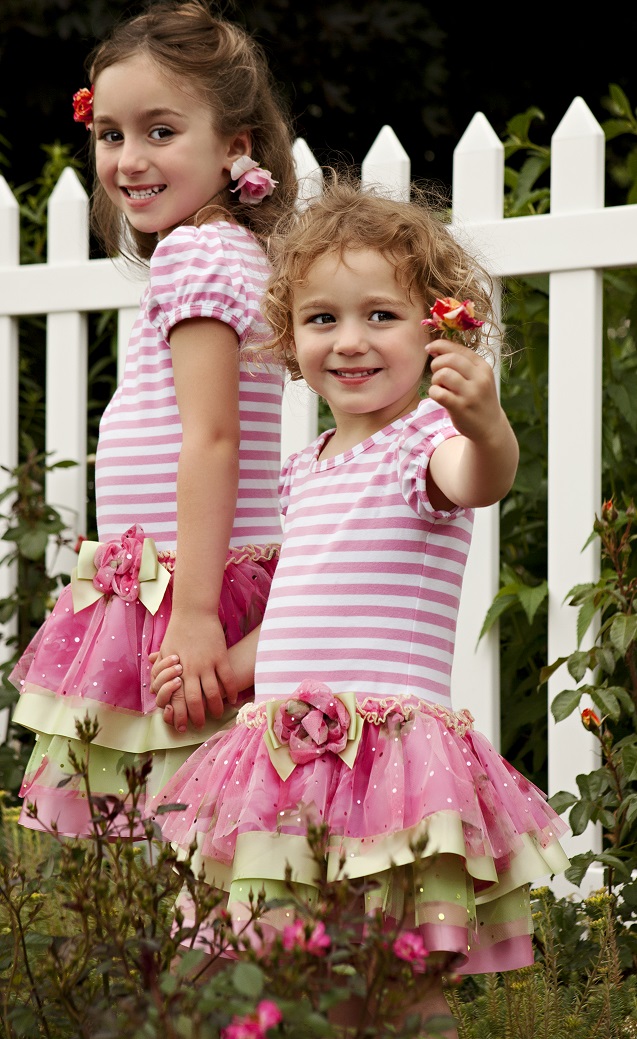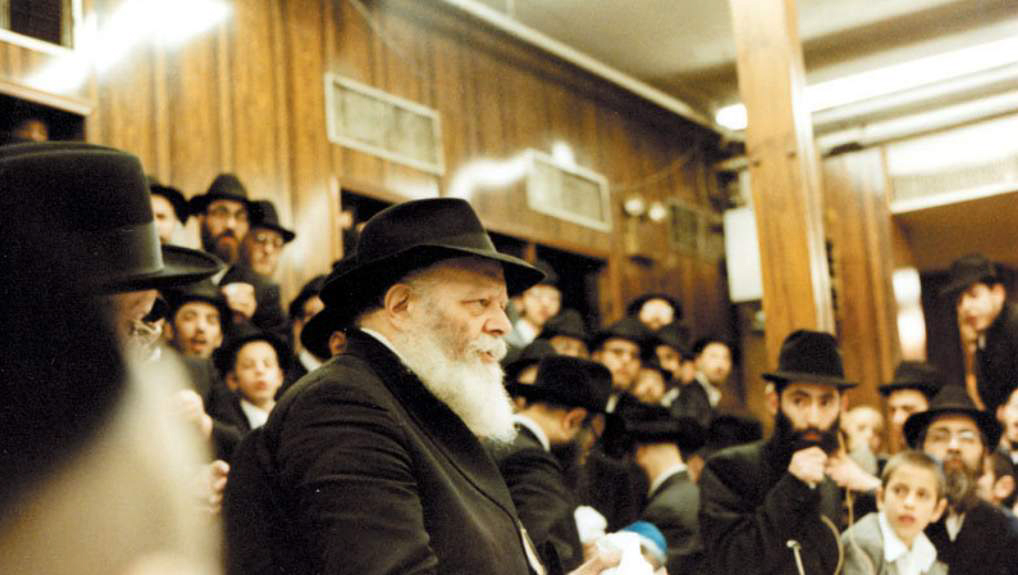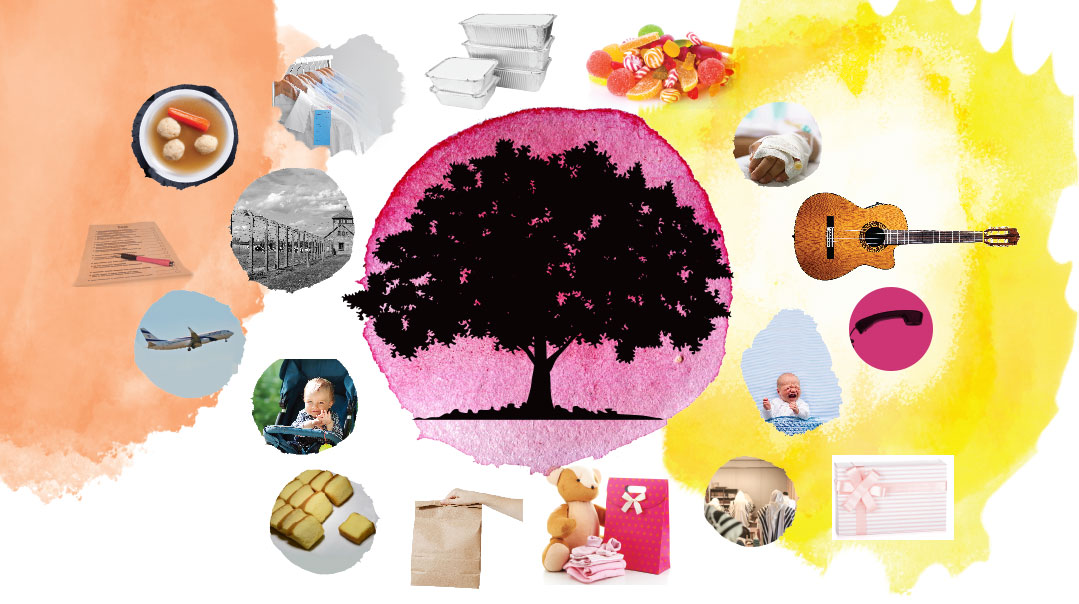Over and Out


CAN’T WE JUST GET RID OF… We’re going through our closets trashing expired medication giving away those skirts we’ll never wear again. What about those things we wish society would get rid of? Nine writers share the things they wish they could toss…
Shidduch Résumés
Esther Kurtz
M
y kids are not in shidduchim so I shouldn’t have a voice. But my brother was in shidduchim recently — he married in August — and I helped my mother sift through the suggestions.
I’m good at that — comparison shopping. If you ever need to figure out which product to choose between two or many I’m your girl. I line them up makes lists of qualities weigh pros versus cons consider what you need and why along with your budget and then make a decision. Pragmatic and rational that’s me.
So this shidduch-résumé business is right up my logical alley… but people are not computers or treadmills; they’re only slightly more nuanced. Résumés are dehumanizing and if you really think about it quite counterintuitive.
People say the résumé makes the process easier — but that’s just an illusion.
Résumés make people less invested in the person because they think everything they need to know is on that paper. Yet there’s a huge difference when a live person tells you the same information. It’s never like the cold list of a résumé; it always comes with commentary.
And when you’re writing it down, your mind processes it more — scientific fact! (FYI: longhand is better than typing.) And you might actually listen and focus instead of just trying to get through the stacks of girls’ information.
Quantity of names does not a marriage equal. People erroneously equate more choices with more freedom, but research indicates that people break down and become debilitated when faced with an overwhelming number of options.
And like most things in life, things often look better on paper than in reality: Case in point, BJJ and Brisk don’t always go together. People are not paper. We might want to be (being two-dimensional may help body-image problems) — but we’re not paper.
Truth be told, I looked great on paper — so normal, so conventional — but talk to my first reference and you’d know that, while everything on my résumé was true, it didn’t begin to touch on who I was. I’m not audacious enough to think I’m the only individual out there. We all are, but in the name of convenience, résumés deny us our uniqueness in the most crucial of social processes.
Matching Outfits
Esty Heller
B
owtie notwithstanding navy cords with an orange V-neck sweater didn’t make an especially cute outfit for a one-year-old boy. Any feinschmecker would agree. Yet I trekked the cyberspace globe to put together this tacky ensemble: Zara Vertbaudet Gap Next Direct even (gasp!) AliExpress.
I neeeded to do this. My daughter — she was three at the time — had this adorable orange-and-navy plaid dress (Zulily) and when we go for a professional photo shoot my kids match.

It’s become such a given; the cheshbonos begin when I learn my baby’s gender at the 20-week sonogram. Matching a girl and a boy had been an epitomic pain. Two boys will be a breeze.
Only… I have two years’ worth of boys’ clothing in storage. In mint condition.
I can’t use any of it. I can’t pass down the gray velvet Tartine et Chocolat knickers even if they’re still completely à la mode and Big Brother wore it a grand total of four times because what will said Big Brother wear? For what do I have adjacent boys if not to dress them the same?
I admit matching siblings — or at least coordinating — is adorable. Chol Hamoed picture day Chanukah parties. And kaparos shlugen never forget. But (whisper) there are four days of Chol Hamoed. That’s four sets of coordinates. Plus Shabbos. And three days of Yom Tov.
Whoever wrote this dictum, I take you to task. Do I really have to dump, indefinitely store, or surrender to a gemach perfectly functional wardrobes, then shop for new clothing every season for each child just so they match? Whatever happened to individuality? And old-fashioned bal tashchis? Our grandmothers in the shtetl, what would they say?!
Let’s all grow up. The kids don’t need it. Before you turn around, she’s refusing to wear the same shoes as her sister, even in a different color.
It’s bath time. Big Brother goes into the blue snowman pajamas, Little Brother wears the green truck pair. Big Sister is in the polka-dotted PJs she outgrew two years ago but insists on wearing whenever they aren’t in the hamper. And, surprise, surprise, they all fall asleep.
Scandalous, I know.
Grudges
Chaia Frishman
I
’m trying hard to remember when I learned about the Great Shampoo Shortage of 1867. What else could have planted the fear that spurs me to buy more Pantene?
Upon purging the pharmaceutical pantry I uncovered — besides numerous hair cleansers — one lemon-scented salt scrub 12 expired boxes of Albuterol six bottles of contact-lens solution (I only wear glasses) and two avian-flu protection kits to be used in case of well emergency. (A gift from a neurotic friend.)
Like mitzvah goreres mitzvah cleaning one area leads one to attack all rooms in the house. Cleaning also creates a vicious case of nostalgia when I sort through my closets. As I stroke the “first date with my husband” sweater and “baby’s first blanket sleeper ” memories taunt me: “Will you hold on to these moments if you discard this tangible reminder?”
Luckily I have an antidote. It’s called the “in case of emergency effect.” When I vacillate about the necessity of an item I ponder If G-d forbid forces of nature permanently evict me from my home suddenly (not avian flu though — I have that covered) would I remember that I owned a houndstooth blazer and matching Looney Tunes ties from Purim 1996? More importantly would I care?
Sure, I’d lament lost photo albums and bronzed baby booties. But the wedges I wore to my vort? My first snood? They don’t pass the “in case of emergency” test.
I am not too proud to admit that the storerooms of my soul are equally crowded. A “non-invitation” to a close friend’s simchah, cruel words of the bully who doled out frequent servings of public humiliation, disloyalty from a trusted mentor — they all claim headspace. Forgiving these injustices somehow cheapens the pain.
Here is where I try the “in case of emergency” assessment tool. During a true crisis, is it likely that these tormentors will register a blip on my pain radar? If I’d forget those grudges then, I may as well stop holding on to them now too. I don’t need Lysol and shmattehs — the best emotional cleanser is benign neglect.
I’ll let go and occupy my time with virtuous pursuits: write a novel, feed the hungry, find a cure for… something. But first, I think I’ll run to the drug store. We might be running low on shampoo.
Size Zero
Faigy Peritzman
"E
xcuse me do you have this skirt in navy in a zero?”
I turn to glare at my fellow shopper. Of course she’s rail thin. But zero?! If things are measured on a scale of one to ten does size zero mean you don’t exist?
Sure enough the saleslady has a navy size zero. I glance down at the skirt I’m holding lay it gently on the counter and walk out of the store.
How could I compete with nothing?
Everything I need to know I learned in elementary school. Perhaps the world needs another chance to sit through those basic math classes. First grade taught me to count items displayed in my workbook. One ball, two bats. Zero means nothing there.
Third-grade percentages defined 100 percent as the ultimate —you got every answer right. You cannot get 110 percent on a test. It simply defies the laws of numbers.
Birthdays are marked with or without parties. Despite what we tell our kids, we don’t stop growing older when we hit 21. Moving along to upper-grade fractions and negatives, we got to make peace with the fact that two negatives do not make a positive when discussing your bank balance.
In our quest for perfection, we simply ignore these basics of mathematics. We live in a physical world, one that’s defined by quantitative limits. It’s wishful thinking to assume you can ignore the numbers on the ground.
Emily Dickinson had it all wrong. Let’s zero in on the facts: I’m somebody, who are you? Are you somebody, too?
Snooze Buttons
Rochel Grunewald
T
he snooze button on my alarm clock has been broken for the longest time. I think that’s a good thing. If I had the chance to toss an object a concept an idea from our society the snooze button would come high on the list.
When I mention this to an older friend she laughs and says she remembers when the first alarm clocks with snooze buttons came out. Apparently they were a modern invention treated with equal parts suspicion and delight. Some people jumped at the idea while others specifically wanted the older models without that pesky temptation to lure them back into dangerous slumber.
It’s not the snooze button itself that bothers me. I can always switch that off. It’s the Snooze Mentality the idea that morning routine can be postponed that we can indulge in those extra minutes of slumber — sleep we can barely enjoy for the knowledge that our alarm will intrude once again in nine minutes’ time.
It’s the idea that Opportunity can wait, that Day can stand by patiently, that Life can be placed on hold while we vacillate on the fine line between I will get to that — eventually and I’m doing it now. Like all of life is a gift to unwrap at our leisure, tossing dew-drenched mornings to the wind while we choose to snooze on, instead of grasping the gift of life, the gift of another day, the gift of another minute, with two outstretched hands and springing out of bed to make use of every single moment.
Because, I tell myself, as the alarm clock rings and the morning is cold and seems to have come too fast, no matter how many snatched minutes I crave, or how frigid the air outside the huddle of warmth under the blankets, I can never snooze away my destiny.
Brand Names
Miriam Klein Adelman
I
used to think that when I grew up and recognized the absurdity of freely advertising for some stranger in Paris by wearing his initials on my jacket I would be done.
But now my little dears are following in my footsteps.
Sometimes I fantasize about a brand-nameless world. A place I could be an individual of value even without a designer name on my handbag. I could actually walk out of my house in my comfortable brand-free sneakers. My daughter would not sigh and shake her head or frantically pull at my shoes as I make my way out the door. “You can’t go out like that Ma! Wear your Uggs.” (I mean really what kind of name is that? It sounds like somebody feeling ill.)
My blood pressure would be normal anxiety attacks nil because I wouldn’t worry about hearing the words “Hi Ma I need a belt ” when my son calls from yeshivah. Which I know means that he desperately wants excuse me needs a designer belt — for the bargain price of $175. On sale. Not that I would buy it for him but when I don’t inevitably I encounter his palpable disappointment.
I’m all for moving to a remote community in Israel where luxuries like brand-name strollers are meaningless. My friend Leah — who’s never visited such a place — decided to send a care package to her cousin living there. After hunting at the “best” stores, she found bargains on top-name items she was convinced would thrill her cousin.
Her cousin was grateful to receive the clothes, but, as Leah reported to me later, the pictures she sent back were of five-year-old Mindy wearing a $150 outfit with faded white tights and her Shabbos shoes — purple-and-green sneakers! The child’s smile was broad. She was clearly proud of her new outfit, but to her and her mother, the famous brand name embossed on the collar meant nothing.
As she shared that story, Leah shook her head sadly while I laughed uncontrollably. “Can you imagine,” she said, “a place where they have no clue that each letter of that designer name costs $50?” Frankly, I can’t. But I’m sure happy to try.
Oversized Furniture
Faigy Schonfeld
A
s a frum woman I know about living life within the confines of halachah along with the formalities and meshugassen of frum culture. But on top of that I’m privy to another layer: frum Hungarian culture.
Being of Hungarian descent means growing up with a lot of wonderful things including staunch admiration for all things tradition warmth that bubbles over and fills every crevice of our homes and a propensity for elegance — in clothing cooking and… dining rooms.
Where I live tiny misshapen spaces are snagged by eagle-eyed brides tagged as dining rooms and become the stage upon which these future hostesses are to receive the world.
A few years back I did that too filling one snug little room with enormous fancy furniture sweetly laying out a tablet and a matching wooden vase with opaque green and honey flowers.
Only these days the world I receive consists of a wild(ish) two-year-old who loves screwdrivers popcorn and Play-Doh and an infant whose preferred mode of transportation is that of a tumbleweed.
Son is on his tummy on the three-foot square of space off the kitchen entrance, flipping pages in a picture book and swinging his legs — until they make gruff contact with one massive leg of our ornate table. He yelps, while Baby blows about happily under the table, until she gets stuck between two finely crafted and cumbersome chairs.
I look at my furniture set: elongated table, upholstered chairs, twin curios, and a buffet, all mocha wood and embellished in gold, a wreath-like curlicue of wooden flowers crowning the breakfronts. And I wish — I wish! — I could just cart them off, spirit them away, maybe to the depths of the ocean.
In their place would come an oversized rug, shaggy and blue, a set of couches with cozy cushions, a neat stack of toy bins, and that sinfully delicious, unimaginable and elusive creation called… space.
Alas, I’m from the Hungarian part of town. (Not really, we hail from Romania, but for the most part, it’s the same.) So the furniture stays, my kids tumble about, knocking into a hunk of wood every other minute, and I, heiress to the culture of gleaming counters, freezers full of kokosh cake (ha, you wish), and lavish dining rooms, close my eyes and wish it would disappear.
Hey, a girl can dream.
Anti-Aging products
Rivka Streicher
S
he stands at the mirror peering into its depths frowning at herself. She rubs and smears smiles tautly unhappily. I frown too to see her struggle to watch her wrestle with her age in the harsh blankness of the mirror. How long she will keep trying?
It’s an industry built on the celebration of youth. The anti-aging industry of course. I don’t support it — yet. I’m years away from that so I’m probably not one to talk. But as I watch my aunt strain in the mirror I think that if given the chance I’d like to toss it all: the creams the toners the magic potions everything that promises to make you look years younger.
There’s a message in there: You were better before.
There’s no way that can be true. Age should be an honor, not a bane. Age brings wisdom hard-earned, strengths acquired and honed through years of struggle and triumph. Wrinkles bespeak nights of concern for loved ones, laugh lines reveal years of smiling through the curveballs of life. People’s pasts, their endurance, it all shows on their faces — is that something to do away with?
My great-grandmother was a beloved and loving matriarch of our family. She never bothered with the creams, and she looked beautiful anyway. My own makeup bag is carefully selected and filled, but I wonder: For how long will I live with the need to impress other people? Myself?
And when will I earn the right to be looked at for who I am inside?
Unnecessary Secrets
Miriam Schweid
It’s quite a task to write a piece while constantly hitting Shift and 8 — the asterisk keys.
Here’s my sad Tale of Two Classmates.*
Two girls were in my class.* One had diabetes*; the other one suffered from well… I don’t know.*
The girl with diabetes didn’t suffer from diabetes, she wasn’t a diabetic. She had a little pouch, a pump, and a whole closetful of jokes about her condition. She would threaten us with pricks (in pre-pump days) and would feign sickness to skip class on occasion. Otherwise, she was a confident and accepted kid with loads of friends and a vast knowledge of the pancreas and insulin. Our biology fair was a no-brainer. Of course we chose the pancreas, and she was in charge.

She was accepted to a great seminary overseas with the administration’s knowledge of her condition, she married a phenomenal boy, and has a beautiful family baruch Hashem.
The other girl suffered from… a secret. The amount of rumors about her condition spans the gamut of the medical and mental-health spectrum. Crohn’s disease, cancer, anorexia, depression, and cystic fibrosis are just the ones I remember.
I think about her often. How did she survive school without a single friend for support? How does a young child keep a secret like that? She was absent frequently, didn’t attend trips, and was often nauseated. Of course she didn’t have a friend. How could she, if she was deathly terrified of questions?
Shidduchim, likely the catalyst to the whole secret thing, were so difficult for her. Alternate facts (as Trump would say) don’t work in the shidduch world. As a famous author wrote, “The more you leave out, the more you highlight what you leave in.”
If we can toss this convention of hiding anything that’s atypical, we would not only bypass the emotional and mental ruin secrets bring, but actually gain support, happiness, confidence, and resilience.
*Ailments, names, genders, cities, ages, and of course weight have been changed to protect the privacy of the individuals, families, shidduchim, yichus, and seminary acceptance.
(Originally featured in Family First Issue 536)
Oops! We could not locate your form.






